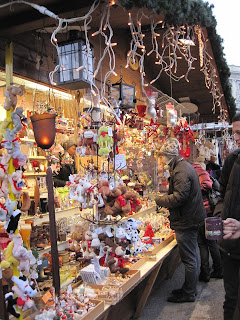So one side effect of being ridiculously behind in updating my blog is that I have the well timed opportunity to write about my research in Zagreb on day one of Croatia's EU membership. Many of you are probably unaware that Croatia entered the Union today after a decade long accession process and is now the 28th member. In case you are interested, a simple google search today of Croatia and EU will provide many articles about the celebration in Zagreb last night and the future of Croatia. This set of articles at the European Voice will provide more in-depth analysis if you are looking for a solid overview of Croatia's path to membership.
 Since I'm writing...ahem attempting to write...a dissertation on the European parliament, I'm incredibly interested in how Croatia has prepared to send representative to the EU's legislative body. Part of my research investigates who runs in European Parliament elections and why political parties make the choices they do to put these candidates on their electoral lists. This is much of what I have been doing in Zagreb. It has entailed many trips to the Croatia Parliament, the Sabor, for meetings with members of the parties in both the government, a socialist and liberal coalition, and in the opposition, the main christian conservative party. Conducting interviews with political elites has, by far, been the best part of my work. I've had an amazing opportunity to speak to many incredibly interesting, intelligent, and prominent politicians. It's really been an asset to my understanding of both Croatia and political action more generally.
Since I'm writing...ahem attempting to write...a dissertation on the European parliament, I'm incredibly interested in how Croatia has prepared to send representative to the EU's legislative body. Part of my research investigates who runs in European Parliament elections and why political parties make the choices they do to put these candidates on their electoral lists. This is much of what I have been doing in Zagreb. It has entailed many trips to the Croatia Parliament, the Sabor, for meetings with members of the parties in both the government, a socialist and liberal coalition, and in the opposition, the main christian conservative party. Conducting interviews with political elites has, by far, been the best part of my work. I've had an amazing opportunity to speak to many incredibly interesting, intelligent, and prominent politicians. It's really been an asset to my understanding of both Croatia and political action more generally.  I won't share too many details here since I'm sure the average person doesn't particularly care about the intricacies of candidate selection or the organization of these political parties, but I will share a few photos from my research and a few links to short articles I've written on the subject. To the left is a photo (sorry about the quality) of a campaign event held in Cvjetni Trg with the Social Democratic Party and Liberal Party. Here all 12 candidates on this electoral list each gave a short speech about their candidacy. The leader of this list moderated the event which concluded with a short speech from The current prime minister.
I won't share too many details here since I'm sure the average person doesn't particularly care about the intricacies of candidate selection or the organization of these political parties, but I will share a few photos from my research and a few links to short articles I've written on the subject. To the left is a photo (sorry about the quality) of a campaign event held in Cvjetni Trg with the Social Democratic Party and Liberal Party. Here all 12 candidates on this electoral list each gave a short speech about their candidacy. The leader of this list moderated the event which concluded with a short speech from The current prime minister. Below are some materials I collected in the weeks leading up to the April 14th elections. The SDP material (left) asked what you would like the candidates to do in the EP: listen or act, the middle card shows instructions on how to cast a preferential vote on a list (a new electoral procedure in Croatia), and the pamphlet on the right shows the slogan of the conservative party: bravely to Europe.


































